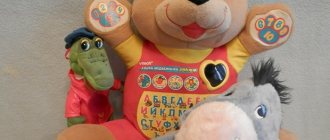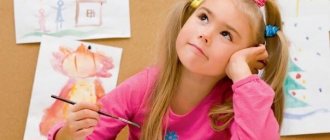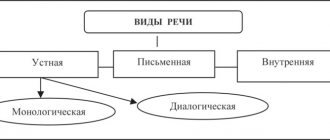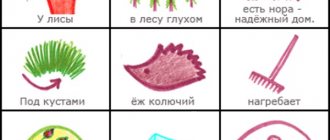Creative imagination is the “engine” that launches the creation of a completely new work or image. Thanks to this mental process, people received masterpieces of art, great inventions and discoveries. And no matter how significant the result, the origins of achievements should be sought in childhood, when the potential of the cognitive sphere begins to form. Therefore, it is important to know how the development of creative imagination occurs in preschoolers, and how to develop personality in this direction.
Brief description of the process
Psychologists insist that creative imagination is special. This is an active learning process.
The imagination can work even in a dream, giving rise to stories, one more incredible than the other. But in this case the nature of the process is passive. Imagination can also be reconstructive, helping to imagine an already familiar object, phenomenon or event. The named types have little to do with creativity. Creative imagination is characterized by novelty and originality of the result. Known schemes and ready-made descriptions are used partially or not at all.
Types of imagination
Imagination is of the following types:
- recreating - the most common type, when images in the head are recreated on the basis of some information, for example, when reading a book, we imagine characters, places, events;
- creative - images appear in the head in new formats without relying on existing information. This type of imagination must be purposefully developed, since it is not formed on its own;
- uncontrollable - the type is characteristic of “violent dreamers” and inventors who cannot control their flow of fantasies, have no consistency and logic of images and often do not distinguish between reality and fiction.
Distinctive features of a child's creative imagination
The imagination of a preschooler, like all cognitive processes at this age, most often acts involuntarily. It is still inappropriate to talk about special plans and goals characteristic of the boundless flight of thought. But active imagination and the desire to try out many things from one’s own experience indicate the beginning of the development of creative imagination in preschool children. Signs of creativity are clearly visible.
- Brightness and originality of fantasies and images
Children create incredible stories in which they give toys or ordinary objects “magical” properties. This happens because preschoolers are immersed in the world of fairy tales and cartoons. They may imagine themselves as characters from a fairy tale and be creative in describing the character's strengths or frightening traits. In addition, the child’s experience is not sufficient to understand the phenomena of the world around him, and he himself comes up with explanations for them.
- Active use of well-known images in new conditions
Developing creative abilities, the child repeats himself less and less often and more often practices creating new images, placing fictional characters in different situations. For example, an older preschooler is able to compose several stories about a fairy-tale hero. The image of the hero is the result of the work of creative imagination, and numerous stories with his participation appear due to the growth in the content of the child’s creativity.
The imaginary plot is embodied in the drawing
The fact that a child’s idea of something often goes beyond the usual boundaries also speaks about creative imagination. So, when completing the task of drawing rain in a fairyland, children imagine it as a shooting star, candy or flower rain.
What is imagination and why develop it
Imagination is a mental process, a person’s ability to imagine new images based on existing experience.
The process of imagination is inextricably linked with thinking and memory. By developing imagination, we activate the brain, so it is important to stimulate the child in this process, especially since children love to invent.
The child masters the world, the rules of behavior in society, interaction with other people through fantasy and play. Not a single thing in the world would be invented if there was no imagination.
When a preschooler is receptive to the development of creative imagination
In psychology, the stages of development of the creative imagination of preschoolers are conventionally distinguished.
The initial stage appears when children, already knowing the real purpose of an object, use it in a new capacity. A replacement appears, but only an object that is somewhat similar (shape, color...) is assigned to the role of “substitute”. For example, imitating measuring temperature, a preschooler will take a stick as a thermometer; and handing an orange ball to a peer, he will start talking about orange.
During this age period, it is useful to show your child how to find new uses for ordinary materials. For example, you can show him different ways of drawing - with a brush, pencil, charcoal, chalk, etc.
Drawing with children 3-4 years old does not mean creating specific drawings. Kids depict scribbles, spots, chaotic strokes. And then, with the help of adults, they see something in the drawn lines and curls. At this age, it is important to broaden the child’s horizons so that he develops a stock of knowledge on which he will rely in his creativity.
From reality to fantasy images
At the next stage, at 4-5 years old, previously acquired skills are improved. Fantasy is still based on the idea of a real object, and new images appear unintentionally. Therefore, even a 5-year-old child will rarely respond to an offer to compose a fairy tale. He is not yet able to complete such a task at the request of an adult.
Younger preschoolers can perform certain actions and then tell what happens in their game or activity. This means that the intention is formed after the action. In such situations, creative imagination also takes place, but its level is only initial.
Children 6-7 years old can already demonstrate independent creative activity. They are able to choose a goal, formulate a creative idea and strive to realize their plans. Imagination is based on the development of creative abilities in preschool children. Older children are already able to include any small element into the overall composition, imagine the expected result before it appears, combine disparate details with one idea, etc.
At this stage, the process of fantasy itself captivates. Parents often notice that their son or daughter comes up with ideas “on the fly.” This skill is especially evident in the writing of stories by older preschoolers. A significant breakthrough occurs due to the general development of the child’s cognitive sphere and the enrichment of speech.
Functions of the imagination
There are 2 main functions of the imagination, which go through certain stages of their development.
- Cognitive. This function is aimed at eliminating contradictions that often arise in a child’s head due to little life experience. Imagination in this form plays the role of a builder for a holistic picture of the baby’s world. The formation of cognitive imagination occurs during the game.
- Affective. Performs a protection function when contradictions arise between the images in the baby’s head and the real picture. Affective imagination helps the child learn norms of behavior. It develops in the process of the child playing out situations and subsequent experiences.
Directions for the development of creative imagination in preschoolers
The development of creative abilities requires stimulation and a systematic approach. In order for a preschooler’s imagination to be distinguished by originality and boldness of ideas, it is necessary to expand the techniques and the stock of concepts that the child could use in fantasy.
It is necessary to help children accumulate impressions and awaken their interest in art. Important:
- do not limit the spontaneity of creative expression
- guide in finding creative solutions
- welcome the child's independence
- show him new available materials for creativity.
Let us dwell on those types of activities that most effectively stimulate the development of imagination at this age stage.
Visual activities
Drawing becomes a field for a child’s creative self-expression earlier than other activities. Already at an early preschool age, children draw circles and other simple shapes, putting their own meaning into these images. Every year the filling of children's drawings with details increases. The preschooler learns to highlight the details of a holistic image, or, conversely, to create a multifaceted image based on a given element.
A task like “Complete the figure”, “Draw 5-8 different drawings based on the figure”, etc. stimulates the search for new images.
An older preschooler is able to form a creative idea and imagine the final artistic image, which will be embodied on a sheet of paper, canvas or... asphalt. You should not limit it to a narrow framework or a specific task. You can ask them to come up with a name for your drawing first.
Didactic game as a means of developing creative potential
The use of didactic materials provides ample opportunities for developing the imagination of a preschooler. Imagination and creativity can be developed by offering children various pictures (fables, parts of an image) or by involving children in games with objects, or by offering verbal forms of tasks (figure out how ...; complete the story).
Didactic games are valuable because they encourage children to fantasize and form the arbitrariness of the creative process. The game creates conditions in which the child can look at a familiar object in a new way. The tasks encourage him to think about things in which he himself is not sufficiently interested.
Creative imagination in design
Working with a construction set helps preschoolers understand how new images are created, how to combine parts in a different, unusual way.
Construction is especially useful because children test their ideas immediately: as soon as certain outlines flash in their imagination, they immediately try to make the presented image.
Construction involves the use of more than just a specific set of parts.
Images can be sculpted from plasticine or clay. Modeling stimulates the development of creative imagination, allowing you to experiment with shape and size. Of course, a child will not immediately cope with a complex task, for example, sculpting a fairy-tale animal. The role of an adult is important here, who will select tasks available to the preschooler, gradually complicating them.
The effect of music on the imagination
Music is a special condition for the development of creative imagination, since when used skillfully it improves and enriches the auditory perception of a preschooler. First, at the suggestion of an adult, children try to catch the sound of notes, either raindrops, the sound of footsteps, or the rustling of leaves.
With systematic lessons, the preschooler gradually develops the skill of listening to the sounds that fill the space. Music, as a means of activating the creative imagination of preschoolers, provides additional material that will color children’s fantasies and will contribute to their more vivid expression.
So, despite the fact that creative imagination is characteristic of preschool age, it is necessary to stimulate its development. By supporting children's interest in creativity and organizing special activities, adults help the preschooler develop, along with imagination, other cognitive processes - thinking, memory, attention, perception.
conclusions
Children's clubs and kindergartens "Baby Club" use various methods and techniques to develop the child's imagination. Our classes are creative, personalized and help children develop their imagination through play and creativity.
Simple exercises to train your imagination
Development of thinking in an adult and a child - recommendations
Psychologists offer many simple but effective exercises for developing thinking and flights of imagination that are suitable for people of all ages. Their main advantages are simplicity and accessibility. Everyone is able to find in the flow of information the exercise that will appeal to a particular person. For example:
- Counting in your head is accessible and interesting to everyone who has school knowledge. There is no need to use any notes, just count mentally. The exercise is especially useful for those who are good at mathematics. You can fantasize about geometric shapes, mentally building all sorts of combinations from them.
- Paradoxically, you can watch children's cartoons with your child and use them as a workout for your mind and imagination. It's helpful to watch them without sound and then come up with funny dialogue. The funnier the better for the imagination.
- The simplest way relates to the world of books. Reading detective stories or fantasy is becoming fashionable; it will benefit both imagination and fantasy.
- “Nonsense piggy bank”, where you can put interesting things: thoughts, pictures, ditties, jokes - everything that is considered nonsense. If necessary, you can always get an idea for a creative solution from there.
- Collective games are becoming fashionable, then it’s time to get some old-time fun out of the box. For example, "Pantomime", in which players must guess what action is being depicted. Creative imagination develops based on memory, since you need to remember what picture the participants are depicting.
Simple exercises will help your imagination fly








